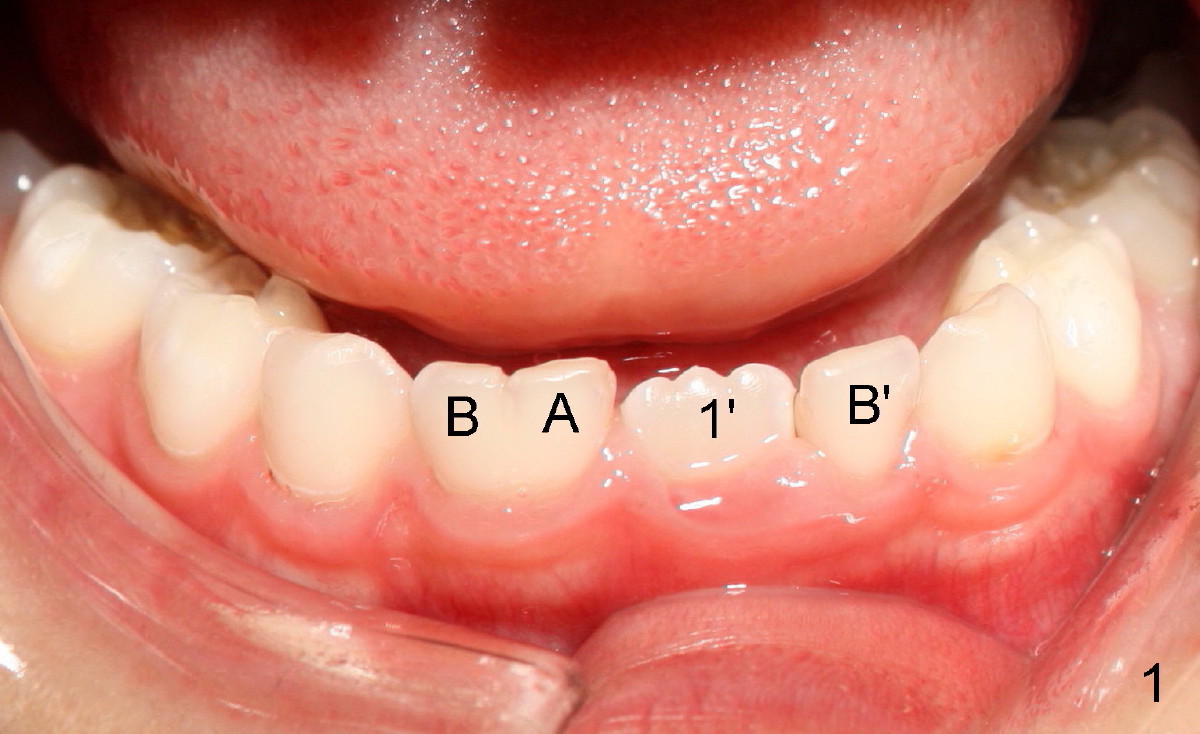
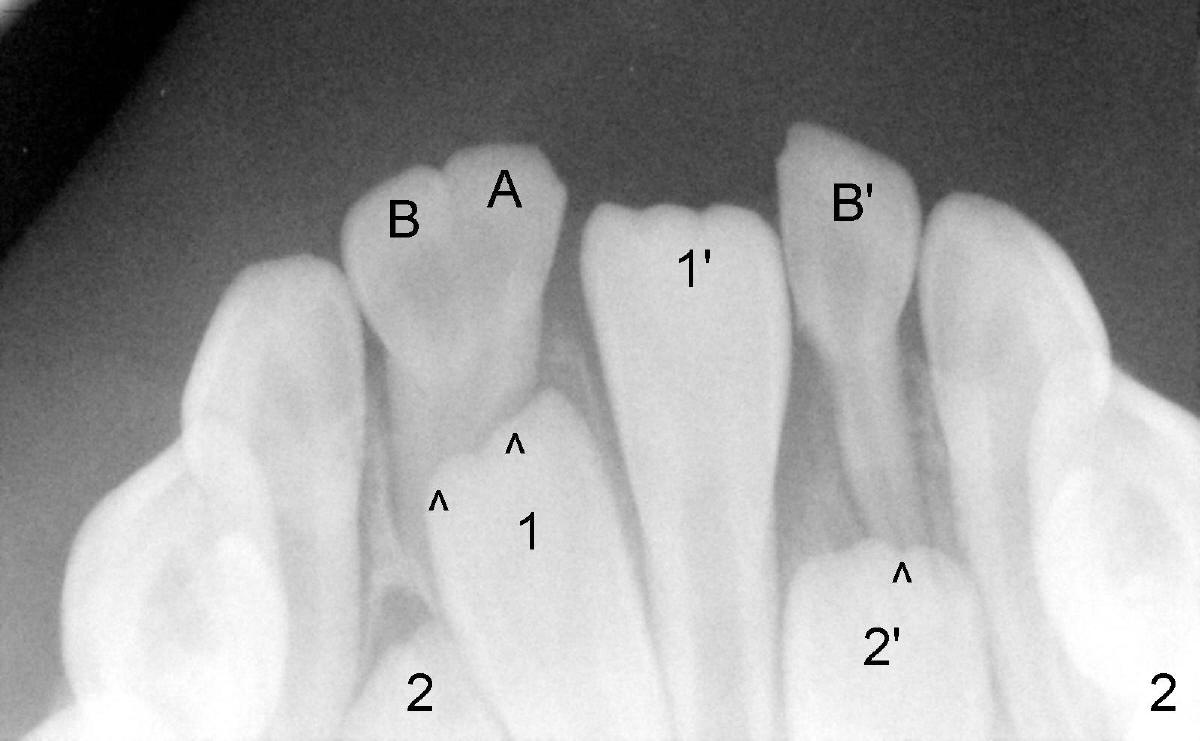
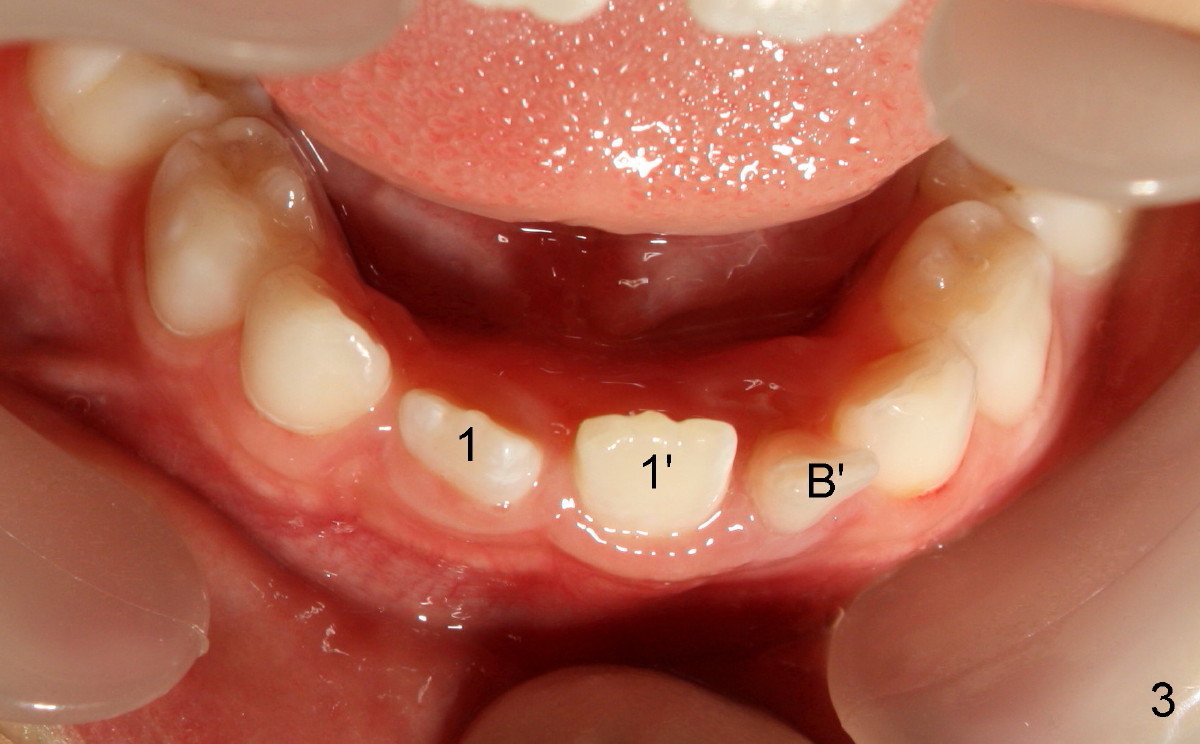
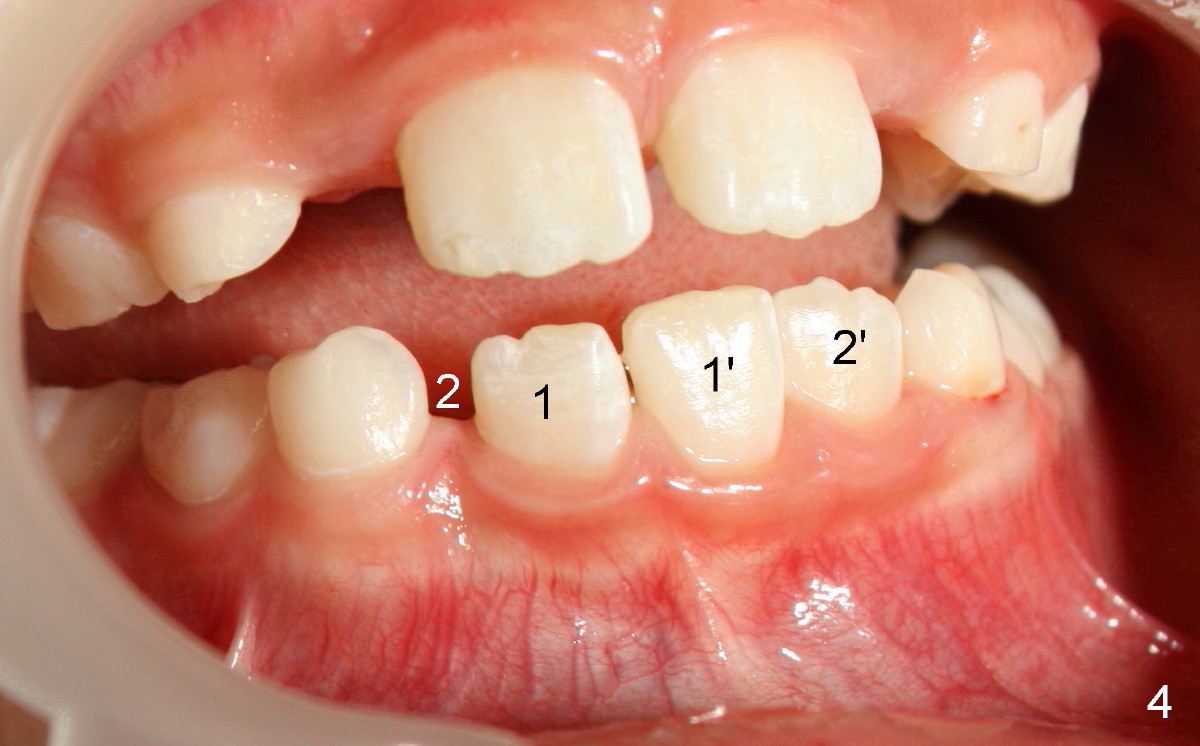

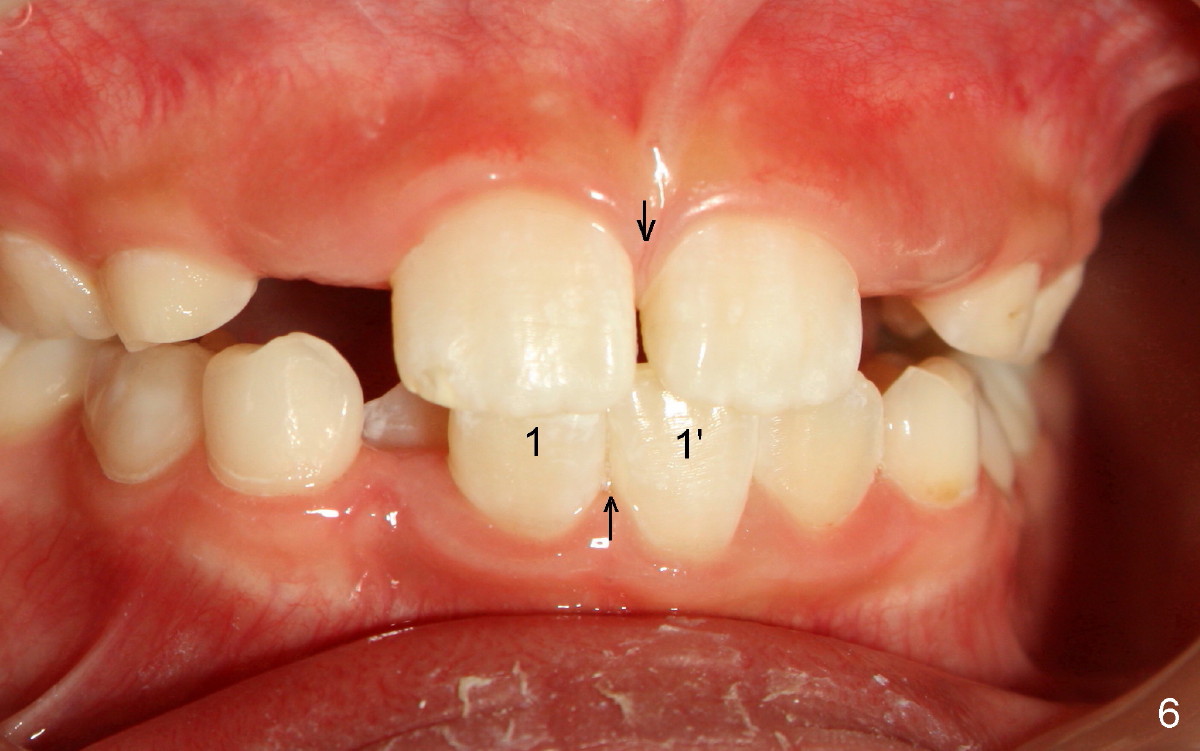
 |
 |
 |
 |
 |
 |
From Tooth Anomaly to Crooked Teeth
Normally right and left baby teeth should be lost and replaced by adult teeth almost at the same time. If they do not, something is wrong. Near the age of 6, Alice loses her first baby tooth (lower left central incisor), which is replaced by its successor (Fig.1: 1'). The right baby central incisor has no mobility at all (A), probably because this tooth fuses with its neighboring tooth (B, lateral incisor). This is a type of tooth anomalies. The total width of A and B is less than that of 1' and B'.
X-ray also shows the fusion between A and B (Fig.2). The adult central incisor (1) underneath causes more root resorption in A than that in B (^). The total width of 1 and 2 (adult lateral incisor) is narrower than that of 1' and 2'.
Seven months later, the right central finally makes its appearance (Fig.3: 1) with loss of A and B (as compared to Fig.1,2). The left baby lateral incisor is almost falling out (B').
Five months down the road, the left adult lateral incisor erupts (Fig.4: 2'), whereas the right counterpart has not shown off (2). When the latter finally shows off 5 months later, it is a wrong place, inside the dental arch (Fig.5: 2). Moreover, the lower midline (arrow) between 1 and 1' shifts to the left (compare to upper midline (arrow). In all, fusion of baby teeth is just the tip of iceberg.
Early and regular dental check up can find out some of early signs of dental anomalies, which are messengers of dental arch anomalies (malocclusion or crooked teeth) in near future. Some of the crooked teeth may need early braces.
Xin Wei, DDS, PhD, MS 1st edition 07/16/2012, last revision 08/11/2012